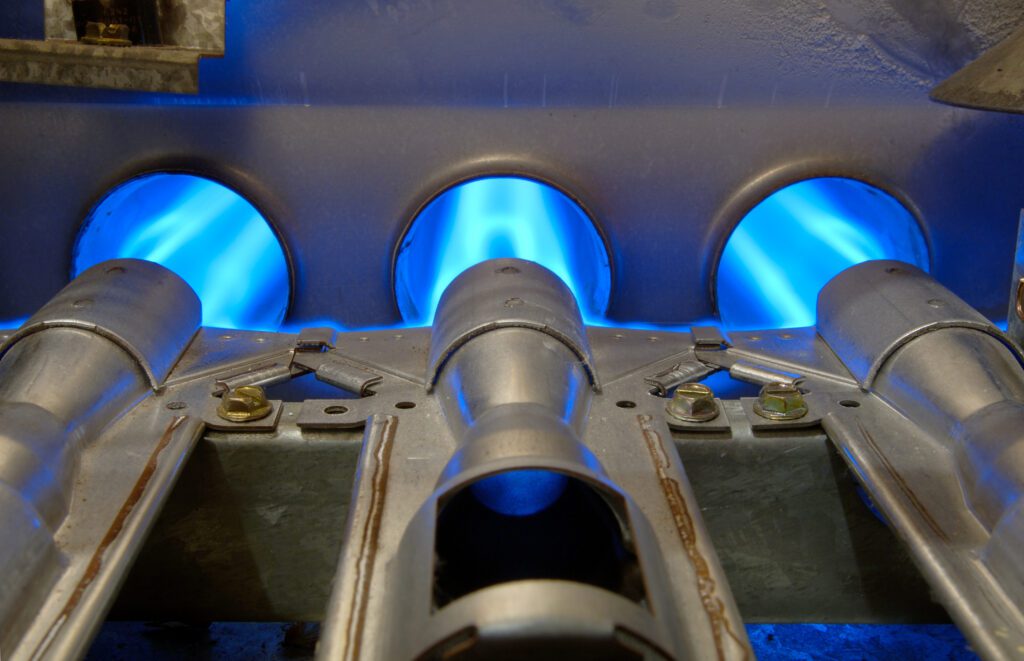Dirty or Clogged Filter
Your furnace has a filter that keeps your furnace, ductwork, and air clean. Your filter impinges dirt, dust, allergens, pollutants, and other particles in the air. While most homeowners know about furnace filters, they don’t know how often to change them. Though it varies by filter type, you should replace most filters every month or two. Check your filter packaging for the recommended life of your filter. If your furnace is not heating as well as expected, it could signal that you need to replace your filter. If your furnace stays on longer than it should or is noisy, these could also signal a filter change.
TIP: Write the date you change the filter on the filter. Also, record a future date in your calendar to replace the filter.
Pressure Switch/Inducer Motor
When your furnace turns on, one of the first components to start is the draft inducer motor. The draft inducer motor is a small fan that pulls air from the combustion chamber and vents it outside your home. The byproduct of incomplete combustion is deadly carbon monoxide, which must be vented outside your home. Your draft inducer motor and pressure switch work in tandem to ensure toxic gases are vented from your furnace. When the inducer runs, it creates a vacuum inside the combustion chamber. For safety, a pressure switch is used to tell if the inducer motor is running by sensing the vacuum and closing a switch. If the inducer motor does not turn on, the pressure switch will stay open, and the furnace will not operate. Proper draft pressure is necessary to close the pressure switch. When the switch does not close, it is usually because there is a blockage in the small tubing to the pressure switch or a blockage in the vent pipe.
Blower Motor Failure
The blower motor keeps the air moving throughout your home. Should this component fail, it doesn’t matter how efficient your furnace is; warm air won’t be distributed throughout your home. These motors have sealed bearings, and they are not oilable. The blower can fail from age or a dirty blower wheel which makes the motor run longer. By having your ducts cleaned and your furnace tuned up annually, you can extend the life of your blower motor.
Cleaning the Flame Sensor

The burner box has a flame sensor rod positioned on its surface. The minute your furnace starts, it is the flame sensor’s job to identify the presence of a flame. If no flame is detected, the sensor will trigger safety features to shut down the system. When the flame sensor malfunctions, the furnace stops operating. The problem usually lies in the maintenance of the sensor. Over time, soot, debris, and other byproducts accumulate over the sensor rod. This hampers its ability to function properly, causing delays in sensing the flame and abruptly shutting the system down. If the damage is not extensive, an Anthony HVAC professional will clean the flame sensor for you. The technician will also thoroughly inspect your furnace heat exchanger to determine whether a replacement is needed.
Electric Supply

Check the power switch installed on the side of the furnace. It may have inadvertently been turned to the off position. Next, head to your main circuit breaker panel. Verify that the furnace breaker is on. The breaker can trip due to high amperage, so turn it back on if it’s tripped. Wait to see whether this reset prevents it from tripping again. As furnaces increase efficiency and intelligence, the equipment becomes more susceptible to power spikes and surges. Talk to your Anthony Technician about options to protect your equipment from power fluctuations and outages.
